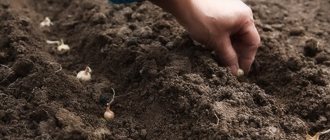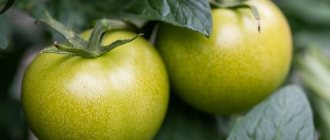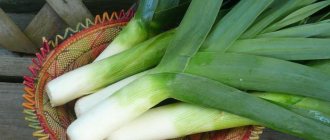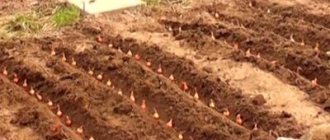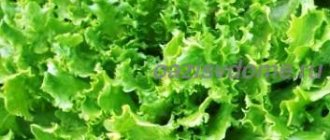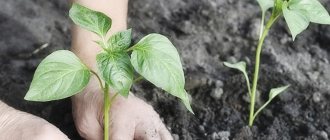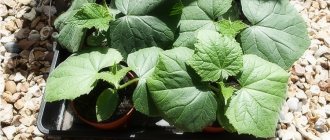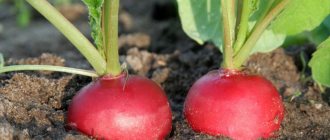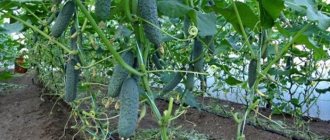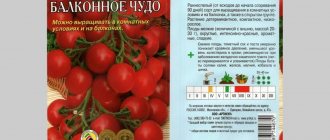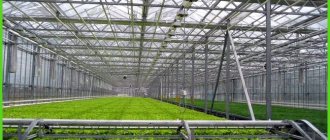Growing conditions and varieties
There are many varieties of onions in nature, and even more have been bred by breeders. You need to choose a variety taking into account what you need from the crop: taste, quantity, keeping quality or early ripening. But it is also necessary to take into account that certain varieties require special conditions.
The culture is most sensitive to day length. On this basis, all types of onions are divided into two large categories: northern varieties and southern ones, each of which has its own characteristics of the bulb. For northern varieties, long daylight hours are required, from 15 to 18 hours. In other conditions, the bow will go into the arrow and the bulb will not fill properly. The southern ones, on the contrary, love short light periods - no more than 13 hours.
It is most profitable to opt for hybrids or varieties that take root equally well in any climatic conditions. These species include Timiryazevsky, Strigunovsky local, Red Baron, Snowball, Centurion, Stuttgarter and others.
The Hercules bow is also famous for its description.
Take into account what kind of crop the variety is - annual or biennial. The method of planting (seeds, seedlings, sets) depends on this.
Sowing density
There are several schemes for planting onions. Depending on the planting material and the purpose of the future crop, the planting density differs. To develop a full-fledged bulb, you need enough space, so you need to plant onion sets at a distance of at least 10 cm in the row and 25-30 cm in the rows. When seeds are planted frequently, a deformed, underdeveloped bulb is formed due to lack of moisture, light, and fertilizers.
Single-growing bulbs ripen poorly and have a thick neck.
Soil preparation
The future harvest depends most of all on choosing the right place. The soil should be loose. If you have loam on your site, then you should loosen the soil every 2-3 days. It is not recommended to plant onions in the same place for several years in a row, or to sow them where carrots or garlic grew before.
Also remember three main factors: light, acidity and watering regime.
Light
As already mentioned, onions are extremely unpretentious, but you shouldn’t plant them just anywhere. First of all, think about lighting : the area for the onion bed should be open, not shaded throughout the day. Otherwise, the light regime of the plant will be disrupted. Choose an area away from fences, greenhouses and other buildings.
Soil acidity
The second factor is acidity. Onions require neutral soil with a pH value of no more than 6.5. Onions should not be planted in areas oxidized by mineral fertilizers. To neutralize acids, you can use slaked lime, but planting onions in the soil after liming is permissible only after 2-3 years.
The best way to reduce acidity is dolomite flour at the rate of 200 g per 1 square meter. meter. Wood ash at 359-400 g/meter is also widely used.
Watering
Onions take root well in places with low air humidity and tolerate drought well. The widely growing fibrous root system helps him in this. However, the soil should be moderately moist.
Thorough watering is necessary for onions only during the active growing season, when the bulb is filling and the feather is growing. At the end of the season, 3-4 weeks before harvesting, watering should be reduced to a minimum, otherwise the onions will not be stored. For this reason, it cannot be sown where groundwater passes close to the surface.
Predecessors
For a well-balanced soil composition for sowing onions, it must be grown in areas where legumes or winter rye grew. Good predecessors would be:
It is undesirable to use land after cultivation:
- sunflower;
- corn;
- potatoes.
Chemicals contained in fertilizers for these crops can have a detrimental effect on onion seeds.
The previous crop should not have a long vegetative period of ripening. A reserve of time in the fall is needed to prepare the soil for the next season.
It is necessary to renew onion crops in their original place no earlier than after 5 years.
Preparing for landing
Onions are planted in three main ways:
- seeds;
- sevkom;
- seedlings.
Each of them requires certain preparation before sowing.
From seeds
The preparation of seeds is the same both before planting in the ground and before planting seedlings. Black onion (popular name) should be soaked in water at a low temperature for 5-8 days. This will start the growth processes and allow the future plant to break through the dense seed coat.
A day before planting, drain the water and let the seeds dry thoroughly, scattering them in a thin layer on a dry surface in a warm place (but not near the radiator!).
Flowering and ripening of onion seeds
From seedlings
It is generally accepted that growing onions from seedlings is a labor-intensive and painstaking process. But the yield with this method is much higher, as well as disease resistance. Onions planted with seedlings quickly gain strength and the onion fly is no longer a threat to it.
Seedlings can be kept on the windowsill in a convenient container, but it is better to sow them in a greenhouse. To keep the seedlings healthy and quickly take root:
- sow seeds in late February - early March;
- soak the seeds in warm water, from 30 to 35 degrees;
- sow nigella in well-watered soil, approximately 15-20 g of seeds per square meter. meter;
- do not cover the seeds with soil;
- Cover the container or bed with seedlings with film to maintain heat, sometimes let the seedlings breathe;
- water regularly, do not forget to weed;
- Before planting in open ground, trim the tops and roots (you need to cut 1-1.5 cm).
From sets
Sets purchased immediately before planting must be dried and warmed. Spread it in one layer on a dry horizontal surface, but not near heating appliances.
It is necessary to store onion sets in a dry place until planting in the spring.
Then the homemade seedlings need to be warmed up thoroughly to wake up the onions after hibernation. We warm it up in several stages: for 15-20 days we keep it at a temperature of 18-25 degrees, and after 6-8 hours at 30-45 degrees. If you don’t have that much time, then immerse the roots of the set in hot water (up to 50 degrees) for 2 hours, and then in cold water for the same time. Warming up the seedlings speeds up their germination and helps avoid bolting. Small heads of sets, no more than 3 cm in diameter, are ideal for planting. For pre-winter planting, the smallest sets, up to 1 cm, are best suited. How to plant onion sets in the fall is described in this article.
SABONagro
Botanical and biological features.
Onion
(Alliumcepa) belongs to the Allium family (Alliaceae). Onion is a perennial herbaceous plant. In the conditions of the Non-Black Earth Zone, onion seeds, as a rule, are obtained only in the third year.
The bulb consists of a shortened stem - the bottom, on which buds are laid, covered with open and closed juicy scales. Open scales are thickened bases of leaves, and closed scales are modified leaves that cover and nourish the buds. The outside of the bulb is covered with dry scales of yellow, white or purple color. From the buds developing on the bottom, either new bulbs (from vegetative buds) or peduncles-arrows with inflorescences (from generative - flower buds) are subsequently formed. Depending on the number of vegetative buds, the bulb may have few or many buds. Rudimentality is one of the varietal characteristics of onions.
Leaves
onions are tubular, covered with a waxy coating. The base of the leaf covers the bud and the section of the stem on which it developed. Each newly growing leaf passes inside the base enclosing it and emerges from it at a certain height, supporting the false stem created by the leaf sheaths. When the bulb ripens, the green assimilating part of the leaf dies off. Along with the green leaves, the sheaths also die; drying out, they create a dense, thin “neck” of the bulb. A well-dried neck, closing, protects the bulb from the penetration of pathogens into it; Such bulbs are well preserved. An unripe bulb is distinguished by a thick neck.
Root system
onion is poorly developed. The roots are string-shaped at first, give branches of the first and second orders, and are densely covered with root hairs. The bulk of the roots are located in a soil layer of 5–20 cm. In an annual bulb, the entire outer part of the bottom of the stem is covered with roots. When the leaves die, the roots also die. When a bulb is planted in the ground in its second year, new roots grow around the remnants of last year's roots. In the very center of the bottom, a dead, as if lignified layer is formed - the so-called “heel”, by which an onion grown from seeds can be easily distinguished from an onion grown from a set or selection. In onion plants that form not one, but two or several bulbs, new roots are subsequently laid only on one side, the heel remains on the side, so that the bulbs are not damaged when separating them from the nest.
Peduncle
in an onion it is an arrow, which, like a leaf, is hollow inside, with a characteristic swelling at 1/3 of its height, and bears a spherical inflorescence - an umbrella of a large number of flowers - 200 - 800 or more. The buds in the inflorescence consist of three tiers. The buds of the first tier bloom first - these are the earliest flowers, from which the most mature seeds are formed. As the previous tier fades, the pedicels of the next tier, which is located below, lengthen, and the blossoming buds always end up on the flowering surface. The duration of flowering of the umbrella depends on climatic conditions and characteristics of the variety and can last 20 - 45 days or more.
Fetus
The onion has a triangular box. When fully fertilized, six seeds are formed. The seeds are small, black, rounded-triangular in shape with a dense horn-like shell. There are 250 – 400 seeds in 1 g. Under normal storage conditions, their viability lasts 2–3 years.
The dense shell of the seeds does not allow water to pass through well, so without preliminary preparation of the seeds, they germinate slowly. A sufficient amount of moisture is required for seeds to swell. When sowing onions at the optimal time in spring in open ground, seedlings appear on the 14th – 20th day.
Relation to temperature.
Onions are a relatively cold-resistant plant. It easily tolerates spring cold, but in the loop phase the seedlings can die at temperatures of minus 2 - 3ºС. The optimal temperature for leaf growth is 15 – 25ºС; they can withstand frosts down to – 7ºС and heat – over 35ºС.
The seedlings have the form of a loop, which is formed by the cotyledon and subcotyledon. After 3–4 days, due to the growth of the subcotyledon and the tension created at the same time, the cotyledon leaf comes to the surface of the soil along with the seed coat. If the soil is crusty during this period, the tension is not enough. In this case, the lower part of the plant, the root, is brought up. Such plants die.
At first, plants develop very slowly. During this period, they need a sufficient amount of moisture, nutrients and light. The first true leaf of plants is formed 7 - 8 days after germination, subsequent ones - every 5 - 7 days. With the appearance of the first true leaf, the cotyledon leaf dies, so the crops during this period look yellowed. This is a natural phenomenon that should not be scary.
Under unfavorable conditions (drought, lack of nutrients in the soil, crust formation, overgrowing of crops with weeds), leaf growth stops and bulb formation begins. A small bulb can form even if there are two or three true leaves, then the plant goes into a dormant state. If a plant has stopped leaf formation and the formation of a bulb has begun, it is impossible to stop this process by any agrotechnical methods - it is irreversible. Therefore, violation of agricultural technology, especially in the first 70–80 days of onion growth, can lead to large crop losses.
To form a large bulb, the plant must have a certain number of leaves. Depending on the variety, conditions and growing zone, from 4 to 25 leaves are formed. The process of leaf formation and the beginning of the outflow of plastic substances into the bulb is greatly influenced by light.
Light requirements.
Onions are a long-day plant. Northern varieties and varieties of the middle zone require a longer day length for their development (15 - 17 hours) than in the southern regions of the country, where the bulb is formed with a day length of 13 - 14 hours. If sowing is late, the time of formation of the bulb shifts to a shorter day, as a result, the growing season of the onion is extended, the bulbs do not ripen for a long time or are not formed at all.
Onion plants also require high light intensity, especially when grown from seeds. Low lighting inhibits bulb formation. Overgrowing of crops with weeds will slow down the development of plants. As a result, the bulbs either do not form at all or turn out to be immature, with a thick neck, unsuitable for storage.
Soil moisture requirements.
The structure of onion leaves indicates the plants’ adaptability to atmospheric drought, and the weak development of roots indicates the high demands of onions for water. The greatest need for water on onions is observed in the first half of the growing season (40 days), during the growth of leaves and the beginning of the formation of the bulb. A poorly developed root system can meet the need for water only if its content in the soil is high, so onions suffer from drought more than other vegetable plants in the first period. The optimal soil moisture for onions in the initial growth period is 80 - 85% HB. This level of soil moisture is maintained by irrigation. During growth, onions do not respond to changes in moisture. After growth stops and they begin to die, excess moisture is harmful: the transition of the onion to a dormant state is delayed, and the ripening of the bulbs slows down. Secondary roots are formed, which impairs shelf life.
Requirements for soil and nutrients.
Onions grow well on fertile and cultivated soils with a neutral reaction (pH 6.5 - 7.0), but are sensitive to increased concentrations of soil solution and respond well to decomposed (rotted) organic (manure, composts) and mineral fertilizers. The consumption of nutrients when sowing seeds occurs much more slowly and in smaller (5-7 times) quantities than when planting with sets. When sowing seeds, the bulbs begin to grow after about 2 months. after germination; by this time, plants consume 7–12% of the total amount of elements during the growing season. The maximum need for nutrients when sowing with seeds in May is observed in August, and when planting with sets - a month earlier.
Onion seed plants use nutrients more intensively and already 40 days after planting they consume up to 30% of nitrogen and potassium and up to 20% of phosphorus, and after another month, respectively, 50, 70 and 60% of the total content of these elements in the crop.
Pre-sowing application of 30 t/ha of rotted manure (compost) or 20 t/ha of humus in combination with lime and optimal doses of minerals and possible (taking into account diagnostics) fertilizing with nitrogen and potassium fertilizers before the start of intensive consumption of elements are the main methods of rational fertilization of onions for different goals.
1 Place in crop rotation.
The most suitable for onions are moderately moist, humus-rich light sandy loam soils and chernozems, silty floodplain lands, free of weeds. The best predecessors of onions are winter crops, to which 30–40 t/ha of manure is applied. Good predecessors for onions in vegetable crop rotations are cucumbers, early cabbage, early potatoes, tomatoes, perennial grasses and fertilized black fallow. Onions themselves are a good precursor for all vegetable crops, except garlic, with which they share common pests and diseases. Onions can be returned to their original state after three to four years. Placing onions over onions increases the number of pests and diseases are widespread. The best areas with low acidity, neutral or slightly alkaline soils (with a pH of the soil solution of 6 - 7) are allocated for onions.
2 Soil cultivation.
After harvesting the predecessor, peeling is carried out to a depth of 5–8 cm using a disk huller; it protects the soil from drying out and provokes the germination of weed seeds. Then, using a mounted plow with skimmers, fall plowing is carried out to a depth of 25–30 cm, while the weed seedlings and their seeds are plowed under. This plowing ensures sufficient moisture accumulation. Significantly reduces weediness in fields. In the spring, plowed land is harrowed with harrows with trailing harrows. Before planting mother onions, the soil is loosened to a depth of 14–15 cm. Pre-sowing tillage of the soil largely depends on the soil and climatic conditions of the area. To level the surface of the field after harrowing, cultivation is carried out twice: first to a depth of 10–12 cm, and then to 6–8 cm.
3 Fertilizer system.
Onions are demanding on soil fertility and respond well to fertilization. Manure and other organic fertilizers, as a rule, are applied to the crop preceding the onion, 30 - 40 t/ha. Poorly decomposed manure applied directly under the onion delays its growing season, and it does not have time to ripen. In addition, such onions preserve much worse and are more susceptible to neck rot, so only rotted manure can be used for onions.
The largest yield of commercial onions is obtained with the timely application of organic and mineral fertilizers. For pungent varieties of onions, it is recommended to apply more nitrogen fertilizers, and for sweet varieties, more potassium fertilizers.
In drip irrigation, the fertilizer system differs from surface irrigation.
Table 1. Approximate rates of mineral fertilizers for onions depending on the planned harvest.
| Planned yield, c/ha | Doses of fertilizers, kg/ha (a.v.) | ||||||||
| N | P2O5 | K2O | |||||||
| Degree of soil supply with nutrients | |||||||||
| I | II | III | I | II | III | I | II | III | |
| 400 | 120 | 90 | 60 | 80 | 80 | 80 | 90 | 90 | 60 |
Note. Degree of soil supply with fertilizers: I – low, II – medium, III – high.
Table 2. Approximate doses of fertilizers to obtain the planned
onion yield, kg/ha.
| Planned yield, c/ha | N | P2O5 | K2O | ||||||||||
| When kept in soil | |||||||||||||
| humus,% | phosphorus according to Chirikov, mg/100 g. | potassium according to Maslova, mg/100 g | |||||||||||
| 1 | 1–2 | 3–4 | 5 | 10 | 10-15 | 15-20 | 20-25 | 10 | 10-15 | 15-20 | 20-25 | 25 | |
| Onion turnip | |||||||||||||
| 400 | 150 | 140 | 120 | 110 | 50 | 50 | 50 | 40 | 100 | 80 | 70 | 60 | 50 |
| Onion sets | |||||||||||||
| 300 | 70 | 60 | 40 | 30 | 50 | 40 | 40 | 40 | 40 | 40 | 40 | 40 | — |
| Bow-feather | |||||||||||||
| 300 | 120 | 110 | 100 | 100 | 50 | 40 | 40 | 40 | 130 | 110 | 100 | 80 | — |
4 Preparation of planting material.
To grow a high and high-quality onion harvest, it is necessary to choose the correct size of the set and carefully prepare it for sowing. Bulbs for machine planting are especially carefully selected, since sets of various sizes with admixtures of dry leaves are sown poorly and unevenly. To prepare the seedlings for sowing, PML-6 production lines are used. From the storage facility, the seedlings are loaded into the receiving hopper PB-15, and then it is transferred to the LPS-6 drum clearing machine and calibrated on the SLS-7 sorting machine into three fractions. Sick, sprouted and damaged bulbs are wiped on the PSL-6 bulkhead table (insecticidal conveyor).
5 Timing and depth of sowing seedlings.
Planting time is determined depending on weather conditions, soil humidity and temperature. The best time for sowing turnip sets in the Non-Chernozem zone is April 25 - May 5, in the Central Chernozem Zone - the second half of April, simultaneously with sowing grain crops. Early seeding increases the yield and quality of onions. Early sowing times contribute to faster growth and development of the ground and root systems, resulting in increased yield and ripening of onions. The most intensive growth of the vegetative mass of onions occurs during early spring planting. A delay in sowing causes a delay in the growth and development of this crop.
Thus, the onion yield is directly dependent on the sowing time, that is, the earlier the seed is planted, the higher the onion yield.
The optimal sowing depth for sets is 3 – 4 cm. Planting depth affects field germination and safety of plants, ripening and weight of bulbs and, ultimately, crop yield.
Table 3. The influence of planting depth on germination, safety and
onion yield.
| Depth landings, cm | Field germination of plants, % | Safety of plants for harvesting, % | Bulb maturity, % |
| 2 | 97,2 | 85,1 | 171,3 |
| 4 | 97,7 | 86,3 | 193,8 |
| 6 | 95,0 | 82,4 | 162,7 |
| 8 | 90,0 | 77,7 | 144,3 |
6 Planting patterns and feeding areas.
The key issues of vegetable growing are the density and method of placing plants on the area. Correct determination of the feeding area contributes to a significant increase in yield and better quality of onions. With a smaller feeding area on fertile soils and under favorable growth conditions, higher yields are grown than on poor and unfertilized lands. The good development of onions when thickened in fertile areas is due to better air-light conditions and more uniform daily temperatures. In recent years, onion sets have been planted on a flat surface in single rows with row spacings of 45 cm and in double rows according to the 20+50 cm pattern. The feeding area and the size of the sets affect the formation and ripening of the bulb. The denser the sowing, the shorter the growing season. Under production conditions, thickened crops accelerate the ripening of onions by 4–10 and even 20–30 days. However, at maximum thickening (4 - 16 cm2), onion plants are greatly inhibited. With an increase in feeding area from 4 to 16 cm2, the plant weight increases almost 2 times, from 16 to 64 cm2 – 1.5 times. But with an increase to 225 cm2, there is no change in the mass of the plant and bulbs. The yield of onions is largely determined by the number and area of their leaves per 1 hectare. Thus, with thickening of planting from 137 to 720 thousand plants per 1 hectare, the leaf area increases by 2.2 - 2.9 times, but net productivity decreases by 1.5 times. Leaf growth and net productivity of photosynthesis, as the main indicators of photosynthetic activity of plants, determine the daily increase in dry matter and allow a more correct assessment of the resulting plant yield. Thickened plantings are usually less clogged: weeds here are better suppressed by onions.
2.7 Plant care.
Caring for onion crops consists of systematically loosening the soil, weeding, fertilizing and watering the plants. During the entire period of growing onions, the top layer of soil 4–5 cm deep is maintained in a loose state. This creates better conditions for air and soil nutrition and retains soil moisture. In addition, loosening destroys weeds. During the summer, the crops are loosened three to four times with cultivators. Loosening depth is 5–6 cm. For onion crops, the herbicides dactal (10–15 kg/ha), ramdol (6–7 kg/ha) and other preparations are dissolved in 500–600 liters of water and applied before the onion shoots. third day after sowing.
Onions are one of the most sensitive crops to clogging. The critical period during which onions most reduce the yield from weeds is 40-50 days from emergence. The control system uses agrotechnical and chemical measures. Among agrotechnical aspects, special attention is paid to observing crop rotations, as well as thorough autumn soil preparation. Among the chemical control measures, a system of treatment with herbicides of various effects is used. You can apply the following onion processing scheme:
- Immediately after sowing, apply Stomp - 3-5 l/ha.
- in the phase of 1-2 true onion leaves, treatment is carried out against dicotyledonous weeds -
Botka with Goal - 0.5 l/ha, Starane - 0.75 - 1 l/ha.
— after the 2-leaf phase, against cereal weeds, they are treated with herbicides:
— nabu – 1 – 3 l/ha;
— poast – 1 – 3 l/ha;
— super targa – 1 – 2 l/ha;
— super fusilade – 2 – 3 l/ha;
— furore super – 0.8 – 1.2 l/ha;
— centurion – 0.2 – 0.4 l/ha;
It is most rational to apply herbicides applied to vegetative weeds in fractions. In one treatment, 1/3 of the norm is applied, but at the same time, the weed development phase should be minimal: cereals have no more than 1-2 true leaves. The shorter the weed development phase, the more sensitive they are to the action of the herbicide. Such treatments are carried out once a week, and each subsequent wave of weeds is destroyed at the very beginning of development. Herbicides in such doses do not have a inhibitory effect on crop plants or this effect is minimal.
2.7.1. Feeding.
During the growing season, two or three feedings are carried out. At the beginning of leaf regrowth, the plants are fed with mineral fertilizers: 100 – 150 kg/ha of superphosphate, 100 – potassium salt, 50 – 60 kg/ha of ammonium nitrate. For the second feeding (15–20 days after the first), 50 kg/ha of ammonium nitrate, 80–100 of superphosphate and 50–60 kg/ha of potassium salt are used. For the Non-Chernozem Zone, it is recommended to use 60 kg/ha of ammonium nitrate, 100 kg/ha of superphosphate and 20 kg/ha of potassium chloride.
2.7.2 Irrigation.
Onion plants are responsive to watering, especially in the first one and a half to two months. If there is a lack of moisture and nutrients at the beginning of development, the onion yield will decrease sharply. The highest yield of commercial onions is obtained by maintaining humidity at the level of 70 - 80% of the moisture content. Irrigate 2–3 times, using small rates (300–400 m3/ha). Irrigation of onions, especially in combination with the use of fertilizers and thickening of the crop, becomes important.
Onions are one of the most demanding crops when it comes to water supply. Onions consume the greatest amount of moisture during the period of intensive growth of the bulb before the beginning of lodging. This period is characterized by very high rates of bulb growth and maximum air temperatures. Depending on the specific conditions of the year, 8-12 irrigations are carried out per season during sprinkling irrigation with a norm of 350-400 m3/ha each. The irrigation rate can be 6000 m3/ha. Watering is stopped 3 weeks before harvesting.
In the drip method, water flows directly into the root system zone and is used most efficiently by plants, since evaporation occurs only through the plants. Also, through the drip irrigation system, fertilizing with mineral fertilizers is carried out, which, simultaneously with water, are evenly distributed to each plant. At the same time, the soil is not compacted, a soil crust is not formed, and there is no need to loosen the soil after each watering. Plant care is simplified and its efficiency increases. Plant productivity increases several times.
When growing onions, sprinkler irrigation systems are also successfully used. This type of irrigation is especially relevant in large areas.
Depending on the size of the field, multi-support sprinklers or drum-type sprinklers are used.
With this type of irrigation, the temperature in the subsoil zone decreases. Modern sprinklers form a drop as close in size to natural rainfall as possible, do not compact the soil and do not injure plants even in the initial phase of growth.
8 Harvesting.
With the beginning of lodging of the leaves, when the bulbs have already formed and the outer scales have partially acquired the color characteristic of the variety, they begin to harvest the onions. Onion harvesting begins in the first half of August, when the bulbs are already formed and the leaves begin to lie down. Onions are harvested using an easy-to-harvest screening machine. Bulbs are dug out from two rows. In one pass, the machine trims the onion with a specially shaped plowshare, passes it through screens and places it in windrows to dry in the sun. After natural drying and ripening, LKG-1.4 picks it up from the windrows and transports it for post-harvest processing to the PML-6 point, where the onions are unloaded into the receiving hopper. Then the entire mass first goes into a loading drum crusher, in which the tops, peels and other impurities are partially separated from the onion, and then onto a roller crusher. Peeled onions are sent for sorting. Here it is divided into factions. The final processing of onions with the separation of rotten and damaged bulbs is carried out on an inspection bulkhead table.
Onion in annual culture. Sowing seeds.
In the conditions of central Russia, turnip onions can be obtained by early spring and winter sowing. For early spring sowing, the soil is prepared in the fall. Sow onions as early as possible. The seeds, as when sown for seeding, are soaked for 18–24 hours, and the water is changed 2–3 times during this time. To ensure even distribution of seeds when sowing, dry them a little beforehand. 0.5 - 1 g of seeds are sown per 1 m2 (at a germination rate of 80%; if the seeds have reduced germination, the sowing rate is increased accordingly). On light soils, fewer seeds are sown; on heavy soils, the rate is increased: dense seedlings more easily overcome the density of the soil. Sowing depth is 1-1.5 cm, then the soil is mulched with humus or peat with a layer of 1-1.5 cm. The earlier the sowing is done, the larger the bulbs will be, the better they will ripen and the higher the harvest will be. To successfully grow onions from seeds, it is especially important to water the plants, spending at least 15 liters of water per 1 m2. During the growing season, systematic weeding and shallow loosening are carried out, make sure that the soil does not dry out, water it if necessary, and stop watering a month before harvesting the onions. Loosening is completed before lodging the leaves. When sown in early spring, turnip onions usually ripen by the end of August - beginning of September.
4.1 Onion diseases and protection against them.
Downy mildew or peronosporosis.
A fungal disease that spreads wherever onions are grown. Particularly harmful in wet seasons; It spreads most quickly at temperatures of 13–20ºС and high air humidity. The disease appears on the leaves in the form of light green spots, which enlarge and become covered with a grayish-purple coating - sporulation. The spores are easily carried by wind, dew and rain and quickly re-infect other plants. Affected leaves turn yellow and dry out. From the leaves, the mycelium penetrates into the bulb and overwinters in it, and in the spring, with the growth of leaves, it awakens, and first appears on the leaves, and then affects the shoots. Spots also appear on the latter, the tissue in the affected areas dies, and black mold settles on it. With severe damage, the shoots droop and die, the plant does not form seeds. On surviving arrows, the seeds, lacking sufficient nutrition, turn out to be puny. If the onion crops are severely damaged, the leaves begin to dry out massively; in this case, the neck of the bulbs does not close, they do not ripen and are then poorly stored.
Control measures:
The most radical measure to combat peronosporosis is the disinfection of planting material by heating it for 8 hours at a temperature of 40 - 42ºС. In the spring, after the leaves grow, crops and plantings are sprayed with 1% Bordeaux mixture, 0.04% zineb, and 0.5% copper oxychloride solution. Onions have a strong waxy, water-repellent coating, so an adhesive is added to the solution. If the disease does appear, especially in damp, cool weather, spraying is repeated, stopping no later than 20 days before harvesting.
Neck rot of onions (gray rot).
The most harmful disease during storage. Infection of the bulbs occurs before harvesting when the leaves are lodging. The fungus penetrates the bulb through a loosely closed neck and causes it to rot. The lesion appears during storage, and during harvesting, diseased bulbs are usually not detected. In an affected bulb placed in storage, the tissues around the neck soften and form depressions, and the succulent scales turn brown. When cut, the onion looks like it has been baked. Subsequently, a gray coating with small black tubercles - sclerotia - forms on the tissues under the dry scales. During winter, the disease affects neighboring bulbs, penetrating into them through lesions. It develops most actively in conditions of high humidity and temperature. Well-ripened and dried onions are less susceptible to disease, so all activities during its cultivation should be aimed at obtaining fully ripened onions. After good field drying and pruning of leaves, additional drying of the onions is carried out at a temperature of 30 - 35ºC for a week.
Mosaic of a bow.
A viral disease that affects first-year plants and seeds. Affected plants appear depressed, their leaves are yellowed, somewhat bent and corrugated, and stand out among healthy plants. Sick plants are stunted in growth, the bulb either does not form at all, or it is underdeveloped, its neck usually does not close. Seed plants, as a rule, have ugly, stunted peduncles, loose inflorescences with heavily overgrown peduncles. The disease is not transmitted by seeds, but by garlic mites and aphids. During storage, healthy bulbs are also infected by mites.
Control measures:
To prevent the spread of the disease, all plants with symptoms of viral infection must be removed and burned. Planting bulbs in well-ventilated areas, using advanced agricultural technology.
Onion smut.
A fungal disease that affects seedlings and young onion plants, especially when grown from seeds. Longitudinal stripes appear on the leaves of affected plants, and then grayish swellings form. When they dry out, they crack and release a large number of black spores that contaminate the soil. The spores are highly viable and remain in the soil for up to five to six years or more.
Control measures:
Disinfection of the soil, liming of the soil with the addition of sulfur (50 - 55 kg/ha), returning the onions to their permanent place no earlier than after five to six years.
4.2 Harmful insects and protection against them.
Stem nematode. The most dangerous pest of onions; it contaminates the soil and can persist in it for up to 10 years. In addition to onions, it affects garlic, parsley roots and other plants. This is a small worm 1 - 1.5 mm long, which is difficult to distinguish with the naked eye. Having penetrated the bulb, the nematode lays eggs in it. The bottom of the bulb collapses, cracks, and the rudiments begin to grow through it; the bulb seems to turn inside out, its juicy scales become loose. Onion seedlings affected by the nematode die, the bulbs rot during storage, and the onion set dries out. Onions are especially affected in wet weather. Control measures: Removal and burning of residues; correct crop rotation. To avoid introducing nematodes into the area, you should not use unknown planting material for onion sets. If unknown material must be used, it should be disinfected. To do this, onion sets are soaked in water at room temperature for 24 hours; before planting, the water temperature is increased to 45–46ºС for 15–20 minutes. Then the water is drained, the planting material is cooled and dried. You can withstand the sowing at a higher temperature - 55 - 57ºС, but only for 3 - 5 minutes. Damaged bulbs are burned. In any case, in order not to bring the nematode to the site, all onion waste during the winter is burned or thrown into a special pit and sprinkled with bleach. In places where the nematode is found, onion crops should not be grown for 4 to 5 years.
Onion fly. The most common pest of onions. In appearance it is similar to a room one, but smaller in size. Its summer begins in the middle zone in the second half of May - early June, usually during the flowering of cherries and dandelions. Lays eggs under lumps of soil near the onion plant or directly on dry scales of the onion. After 4 - 8 days, larvae emerge from the eggs, which penetrate into the lower part of the plant, through which they feed, then turn yellow and dry out. A new generation of flies appears after 2–3 weeks and harms plants in July–August. The affected bulbs rot. Control measures: Timely destruction of affected plants and all plant remains; soil peeling and deep fall plowing. To prevent the fly from laying eggs, the soil around the plants is dusted with a mixture of tobacco dust and lime in a 1:1 ratio at the rate of 10 g/m3 or sprayed with a solution of karbofos - 20 g per 10 liters of water. Affected plants are removed and burned before the fly larvae begin to leave them.
Onion moth. A small nocturnal butterfly appears in June and lays yellowish eggs on the leaves and flower arrows of onions. Caterpillars hatched from eggs, yellowish-greenish in color with brown warts, penetrate inside the leaf or shoot and eat away the tissue in the form of longitudinal strips of irregular shape. The second generation of caterpillars causes damage in late July and August. During this period, they penetrate the unopened inflorescences along the arrow and eat away the rudiments of the flowers or gnaw through the pedicels, causing the flowers to fall off and the seeds to die. Control measures: Maintain crop rotation on the site. Spraying crops with a 0.2% chlorophos solution.
Onion secretive proboscis. A small grayish weevil, the larvae are yellow, legless, with a brownish head. They appear in early spring, first on the leaves of perennial onions, then onions, leaving light dots in their upper part - pricks; lays eggs inside the leaves. The larvae feed on leaf tissue, gnawing out longitudinal passages in the form of strips of varying lengths; damaged leaves turn yellow and die. After 15–20 days, the larvae gnaw holes in the leaf, go into the soil and pupate there. At the end of June - beginning of July, beetles of a new generation appear and harm already mature onion plants and seeds. Beetles overwinter at the edges of plots. Control measures: Destruction of post-harvest residues; disinfection of storage facilities; correct rotation of crops. To combat the secretive proboscis, all post-harvest residues are destroyed and turfed boundaries are treated. In the spring, when puncture points are detected on the upper leaves, the seedlings are sprayed with a 0.2% solution of karbofos.
Onion miner fly (miner). Seriously damages onions. Summer begins in late May - early June. The larvae hatching from eggs laid inside the leaf feed on the pulp of the leaf, leaving behind characteristic passages - “mines”. External damage is similar to traces from hail. Severely damaged leaves die. The larvae pupate and overwinter in the soil, sometimes found in the neck of the bulb. Control measures: Timely destruction of affected plants and all plant remains; soil peeling and deep fall plowing. To prevent the fly from laying eggs, the soil around the plants is dusted with a mixture of tobacco dust and lime in a 1:1 ratio at the rate of 10 g/m3 or sprayed with a solution of karbofos - 20 g per 10 liters of water. Affected plants are removed and burned before the fly larvae begin to leave them.
Onion hoverfly. Quite a large fly, bronze-green in color, usually emerges at the end of July. The fly lays eggs in groups on the bulb or near the plant on the soil. After a week, larvae appear, which, gnawing into the bulb, penetrate inside it and feed on the juicy scales there. Typically, two generations of hoverfly develop on a bow. The larva is almost capable of completely destroying the bulb, leaving only its walls; the inside of the onion turns into a black rotten mass. Control measures: In the fight against hoverfly, it is important that only healthy onion sets are used for planting, all post-harvest residues must be destroyed and preventive measures are taken to prevent damage to plants by the onion fly. The hoverfly primarily attacks plants that are weakened or slightly damaged by the onion fly. In the summer, repellents will also be used against it. To prevent onions from being damaged by pests, it is useful to place them next to carrot crops. The onion, in turn, repels the carrot fly.
Root (onion) mite. It damages the bottom of the bulb, penetrates inside the plant and feeds on the pulp, causing the bottom to die. In plants damaged by mites, the tips of the leaves darken and the bulbs dry out. Ticks do not reproduce well in hot weather and die at a temperature of 40ºC, but are well preserved in poorly disinfected storage facilities. Control measures: Disinfection of storage facilities before storing onions with sulfur dioxide (80 g of sulfur per 1 m3); warming up the onions before storing them and planting them in the field at a temperature of 40 - 43ºС for 1 hour.
Fertilizers
Onions do not particularly like organic matter, so you should not fertilize the beds with humus, compost or manure. The soil must be neutral. But for feeding during the growing season, he will thank you with a good harvest.
We introduce the first nutritional supplement in the third week after planting. It will be organic. A manure tincture is perfect (1 kg of manure + 10 liters of water, let stand for at least a day). Another option is bird droppings, diluted at the rate of 1kg/15l. More details about fertilizing are described here.
Stages of feeding onions with mineral fertilizers
In the second month of growth, mineral fertilizers can be introduced. Nitrogen in the strength of ammonium nitrate is introduced first, then potassium (potassium nitrate). Fertilizing is best done in dry form: scatter small amounts of fertilizer over the garden bed before watering or rain.
How to grow onions
To obtain a good harvest, vegetable growers follow certain methods for growing onions, taking into account its nutritional needs, requirements for soil composition, lighting, and humidity levels.
Onion likes:
- soil fertilized with organic matter, neutral in acidity;
- nitrogen and potassium at the beginning of the growing season;
- loose, air-saturated soil;
- sunny, well-ventilated areas;
- moist soil during the feather growth period and dry soil during the head growth phase.
Landing dates
There are no strict calendar deadlines in gardening. You should always take weather conditions into account. In warm early spring, onions are sown in mid-April. In general, you should focus on the condition of the soil - it should be heated to the depth of a finger. The soil is considered heated if its temperature is above 12 degrees.
Nigella biennial crops are sown at the same time. Seeds of annuals (such varieties take root only in the southern regions) are planted earlier, in early April - late March. The seedlings are transferred to a permanent place 2 months after sowing.
How to get a good harvest
To get a good harvest of onions:
- Organize proper watering of the beds. For onion growth, it is important that the layer of soil at a depth of 10 cm remains evenly moistened.
- Regularly after rain or watering, loosen and weed the soil.
- Feed the plants on time. Keep in mind that excess nitrogen in the soil will stimulate feather growth and the head will grow small.
- At the first signs of damage, treat the plantings to prevent diseases and destroy pests.
Problems, illnesses
With improper storage of planting material, damage to the bulbs and excessive soil moisture, many onion diseases can progress. The most common are different types of rot: black, fusarium, neck, wet bacterial. These diseases primarily damage the tissue of the bulb itself and are difficult to identify before harvesting. It is impossible to consume and store such fruits.
A disease such as downy mildew is also common. The fungus that causes the disease overwinters in seedlings or in the soil, on the roots of perennial plants. In the first stages of the disease it is impossible to detect it. When the infection enters the active phase (2-3 weeks after planting the infected set), it affects the leaves - pale yellow or blue-violet spots appear on them. Soon the feathers completely die off, and the growth of the turnip itself stops.
Pests are another problem with onions. The main pest found throughout Russia is the onion fly. It is not the insect itself that causes harm, but its larvae, which gnaw passages in the bulb.
Siberia is also home to the onion hoverfly, a small bronze-green fly that feeds on onion leaves. Root mites and onion moth larvae cause irreparable damage to the bulb, which is the main diet.
Care
The basis for caring for an onion bed is the correct watering regime, timely fertilizing and regular weeding. We have already talked about watering and fertilizers. Read more about how to water onions in open ground at this link.
Why is weeding so important? An abundance of weeds not only takes away nutrients from the soil, but also prevents the soil from naturally draining. Overgrown beds create an ideal environment for the development of harmful fungi and bacteria. And it’s much easier to notice pests if there is nothing in the garden except onion feathers.
Caring for onions according to growth stage
The use of insecticides and growth enhancer chemicals is not recommended. The bulb retains the absorbed substances throughout the growing season, which means the fruit will be unsafe for the body.
If you also collect greens from the garden during the summer, then always leave at least 2 leaves on each bulb.
Selecting a location
Sowing must be carried out in the correct sequence and following certain actions:
- Disinfect the seeds using a weak solution of potassium permanganate. It is important to change the solution periodically. There are other methods, which we will discuss later in the article.
- It is worth choosing the earliest possible period for planting. A constant temperature of +15 °C is excellent. You can also focus on the thawing of the ground - it should warm up to a depth of at least 5 cm.
It must be taken into account that onion sets in the form of seeds can withstand light frosts when planted, which makes caring for them easier in the early stages. But the bulbs cannot tolerate frost, so they can be placed in the soil only when there is no threat of frost.
- To make the planting more visible, you can mix it with something light, such as sand or chalk.
- Before planting seeds in the soil, it is necessary to water the bed with hot water. The number of seeds per 1 m² is 10 g.
Cleaning and storage
The plants themselves will tell you when the fruit is ready. Young feathers stop appearing, the leaves begin to fade and turn yellow, the upper scales of the bulb acquire the characteristic color of the milking variety. If such signs appear, do not delay, start cleaning. Have time to complete the harvest before the first frost and the first morning dew.
Freshly dug onions need to be dried for a week, otherwise they will rot. What to do if onions rot during storage, this material is written. If weather permits, scatter the onions directly in the garden bed. After drying, trim the remaining feathers, leaving a “tail” of 3-4 centimeters. To disinfect and ensure long-term storage of the crop, warm the onions to a temperature of 40 degrees for about an hour.
The dried onions are placed in prepared containers. The container must be made of breathable materials. Wooden boxes, fabric bags or nets for vegetables, and nylon stockings work well. It is best to store the packaged harvest in a cool, dry place - a cellar or basement. You can read more about storing onion crops here.
